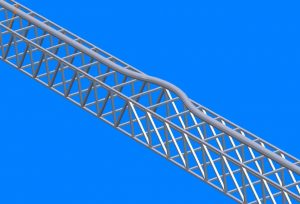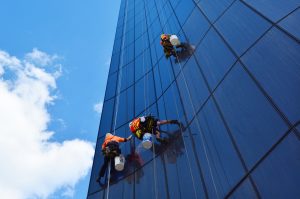Comes now the sheriff announcing increased fines for misbehaving! And this isn’t a time out or sit in the corner. This is money—real money for misbehaving. The United States federal Occupational Safety & Health Administration, OSHA, has raised the fines for violations of it’s standards for the first time since 1990. This is due to the fact that the fines were not allowed to be adjusted for inflation. However, that was remedied in the latest budget bill that was recently signed into law.
The fines have been increased by the amount of inflation that has occurred since 1990, resulting in a $12,500.00 fine instead of the previous $7,000.00 for a serious violation. Willful violations will come with a $125,000 ticket instead of the existing $70,000.00 tab. It is assumed that the OSHA policy of adjustment of the dollar amount for history, company size, good faith and other factors will remain in place so you may get lucky if you choose to disobey.
According to OSHA, heavy fines are necessary in that they encourage employers to provide a safe workplace for their employees. In testimony on October 7, 2015 before the U.S. House of Representatives Committee on Education and the Workforce, Subcommittee on Workforce Protections, Dr. Michaels, Assistant Secretary of Labor for the Occupational Safety & Health Administration, stated that “there are still far too many employers that cut corners on safety and neglect well recognized OSHA standards and basic safety measures.” Dr. Michaels also testified that “enforcement remains an effective deterrent” (for these employers).
In the November 2, 2015 OSHA QuickTakes Newsletter, Dr. Michaels cited a study from the Institute for Work and Health (IWH) that found “there’s strong evidence that regulatory health and safety inspections that result in a citation or penalty are effective in reducing work- related injuries.” The same study found that general deterrence is not as effective. According to the same Institute for Work & Health report, Dr. Emile Tompa, an IWH senior scientist and the lead author on the systematic review states that “What this shows is employers do take steps to prevent work-related injuries for employees when there are direct consequences to them.”
While it is true that there are employers who do not take their obligations seriously (yes there are evil employers out there), the truth is that most employers are concerned about safety. Even Dr. Michaels acknowledged that when he testified that “most employers want to keep their employees safe and make great efforts to protect them from workplace hazards.”
Therefore, to be effective, enforcement must be accurate and fair. To accomplish accuracy, it is reasonable to assume that the enforcement officers (police) are knowledgeable about the laws that they are enforcing. The IWH study, and Dr. Michael’s testimony before Congress, do not address this significant aspect of enforcement. The task before compliance officers is daunting: They are to know the hazards addressed in the thousands of regulations found in the various OSHA codes. Obviously it is an impossible task for any one individual to accomplish, yet we expect them to. Of course, we should also expect employers to know the myriad standards that affect their workplaces. For scaffold companies, this means not only knowing and applying the General Industry standards for their place of business, but also the Construction Industry standards for any construction site where they have employees. It shouldn’t be surprising that it is impossible to meet all the standards.
Besides accuracy, enforcement may be an effective tool but only when it is applied fairly. But how is that accomplished? Does OSHA only go after bad actors such as those in OSHA’s Severe Violator Enforcement Program that targets “recalcitrant employers,” basically employers who just don’t get it? Does this mean that OSHA should ignore “good” employers? According to the IWH study, that doesn’t work as well as citing an employer occasionally even if the offense is marginal.
Does enforcement work? Does education/training work? The “Most Frequently Cited Serious Violations in Construction – Fiscal Year 2003” include Scaffold Fall Protection as #2 and Scaffold Access as #5. (Fall Protection for other than scaffolds was #1 that year.) For this past fiscal year, the top 10 include Fall Protection at #1 and Scaffolding at #3. What should one make of this? It doesn’t look like we have made much progress, based on these statistics. In fact, it appears that enforcement is not the effective tool some would like to think it is. I can tell you this, based on my experience in the scaffold and construction industries: Training is woefully inadequate for scaffold users and OSHA compliance officers. After 45 years of mandatory regulations, scaffolds are still constructed lacking fall protection. How can this be? After 45 years, most scaffold users cannot state the capacity of a scaffold. After 45 years, most compliance officers cannot determine the load that is on a scaffold. After 45 years, most employers do not know their obligations to their employees. And most disturbingly, after 45 years most employees in the United States do not know they have a right, that is correct—a right, to a safe workplace.
Maybe OSHA is correct—enforcement works. I think not. Training is the secret and most employers, at least the good ones, know it. And the training isn’t only for the employees. Employers need training, employees need training and compliance officers need training. Frankly, enforcement of the training requirements would make OSHA’s job a whole lot easier.













